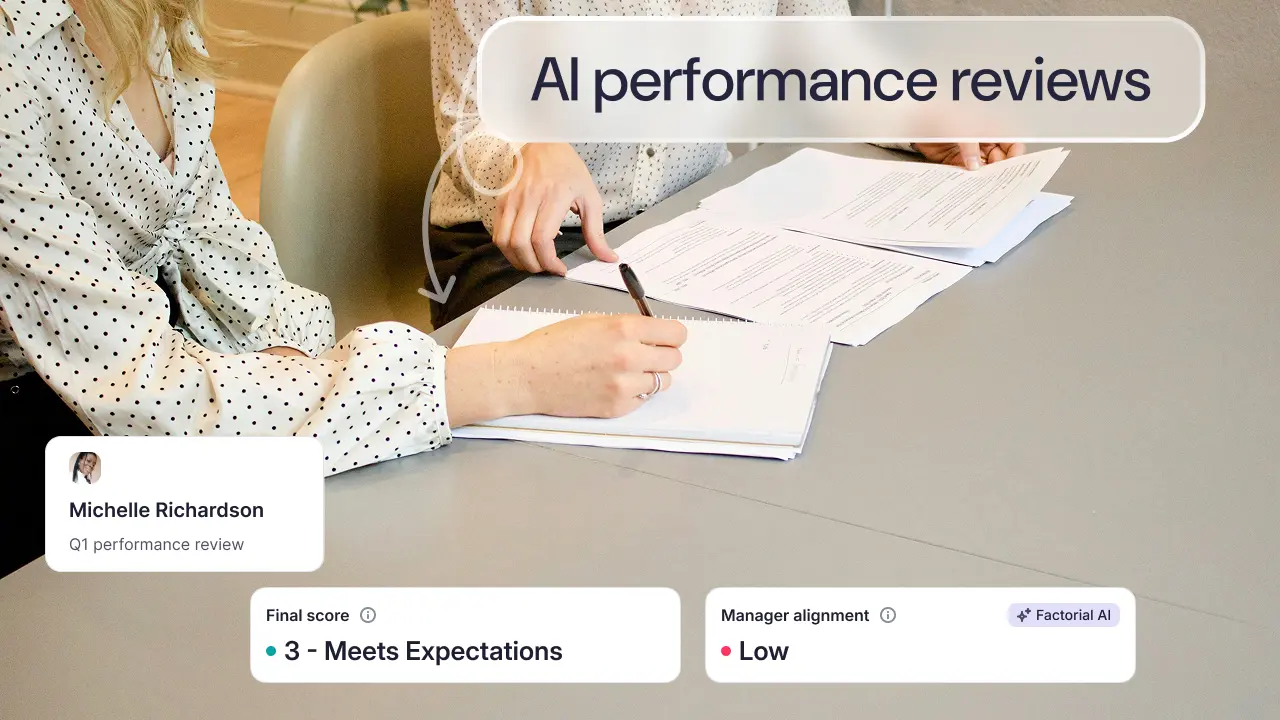Cloud software vs desktop software for your HR department? That’s the question we will be debating in this article. It seems HR cloud software has become the favourite option among Human Resources professionals who are seeking to streamline and digitize their HR operations. The advancement of technology has a direct impact on our daily lives, and the workplace is certainly no stranger to its repercussions. Let’s take a look at what using cloud-based software can mean for your company.
TABLE OF CONTENTS
What is meant by “the cloud”?
What is Cloud Software? Definition and Characteristics
Types of HR Cloud Software
Try Free Cloud-Based HR Software Today
7 Advantages of Cloud Software Over Desktop Software
Cloud Software vs. ERP or Traditional Software: Key Differences
Cloud-based HR software ✅
What is meant by “the cloud”?
According to the definition provided by the information giant, Microsoft, in short, ‘the cloud,’ or in English, ‘cloud computing,’ refers to the delivery of services, including servers, storage, databases, networks, software, analysis, and intelligence, through the Internet.
The cloud helps to decentralize traditional processes, as it provides users with the possibility of utilizing a vast array of products and services remotely. A clear use of this is in remote working or hybrid work.
Although popular imagination often envisions information stored in some remote space, the truth is that ‘the cloud’ is not an actual cloud itself. Instead, it is a collection of external servers provided by companies that offer specific services. This way, end users are not in need of hardware and program installations to be able to use the service.
Cloud services typically operate on a pay-as-you-use model, aiding in reducing operating costs, enhancing infrastructure efficiency, and facilitating scalability as business needs evolve.
What is HR Cloud Software? Definition and Characteristics
Cloud software is named as such because the accessed information is hosted in a virtual space.
Companies offering services to users allow them to store files and applications on remote servers, enabling access to all data through the Internet or, more precisely, via Internet 3.0.
This implies that users are not confined to a specific location to access their information—a phenomenon we encounter daily when consuming various multimedia content through social networks and streaming platforms, for instance.
Back in the era of Internet 2.0, which emerged about a decade ago, and even more notably during its inception in the 80s, performing any computer-related task (such as working with texts or Excel templates) required having hardware that met specific requirements to accommodate the particular program for each task.
Cloud software eradicates the labor-intensive process of handling and utilizing data on individual devices. Simultaneously, it reduces costs and enhances the user experience.
For instance, rather than mandating employees to physically visit the office for document submission, we can now request documents through an employee portal or even solicit their digital signatures via HR software.
Types of HR Cloud Software
Currently, various methods exist for categorizing software based on how tasks are executed, user interactions, service provision, and payment structures. Here are some of the main categories:
Software as a Service (SaaS)
SaaS involves licensing software applications to customers, providing them through a pay-per-use or on-demand model. This approach offers convenience and flexibility, as users can access software via the internet without the need for local installations. An example of a SaaS platform is Factorial.
Infrastructure as a Service (IaaS)
IaaS delivers a comprehensive range of resources, including operating systems, servers, and storage, via IP-based connectivity. This on-demand service eliminates the requirement for customers to purchase software or physical servers, as they can instead acquire these resources from an external provider. Prominent examples of IaaS offerings are IBM Cloud and Microsoft Azure.
Platform as a Service (PaaS)
PaaS represents the most intricate layer among the three cloud computing models. While sharing similarities with SaaS, PaaS goes beyond delivering software online; it provides a platform for constructing and delivering software over the internet. Notable instances of PaaS include platforms like Salesforce.com, which serve as benchmarks in this category.
Each of these cloud software models presents distinct advantages and is tailored to meet specific user needs and preferences.
Try for Free Cloud-Based HR Software Today
If you’re aiming to enhance your operational efficiency and are considering administrative software to streamline your small to medium-sized enterprise (SME), why not give Factorial a try today? You can enjoy a 14-day trial period with absolutely no limitations. During this trial, you’ll have access to a comprehensive suite of tools to facilitate time tracking, vacation and absence management, payroll incident handling, document management, and more.
Take the step towards optimizing your HR processes with Factorial’s cloud-based solution today!
7 Advantages of HR Cloud Software Over Desktop Software
Cloud software provides numerous advantages for companies, with the primary benefit being the ability to access it from anywhere in the world, at any time, and on any device. However, the benefits of working with cloud computing extend beyond this convenience. Operating through the cloud streamlines daily organizational tasks such as time tracking and document signing, while also leveraging artificial intelligence for generating various reports that contribute to better decision-making, including areas like payroll and performance evaluations.
To delve deeper into this topic, let’s explore the 7 key advantages of cloud software in comparison to traditional software:
Cost Reduction
Cloud software eliminates the need to invest in purchasing hardware, software programs, and the time-consuming process of configuration. Expenses related to server infrastructure, continuous electricity supply, cooling systems, and IT personnel are transferred to the service provider, significantly aiding expense management for businesses.
Scalability
Scalability is crucial for any organization aiming for consistent growth. Cloud services are inherently flexible and adaptable to the size, type, culture, and overall needs of the contracting company. As requirements change, cloud providers can adjust computing power, data storage capacity, bandwidth, and more.
Time Savings
Time management holds immense importance, particularly for Human Resources professionals. Cloud computing, known for its self-service and on-demand delivery, allows rapid provisioning of substantial computing resources. Processes can often be executed with a few clicks, enhancing flexibility and relieving pressure on overall planning.
Storage and Security
Cloud software automatically stores data in secure cloud environments, mitigating the risk of data loss. Moreover, data backup, disaster recovery, and business continuity become more accessible and cost-effective due to redundancy across multiple cloud provider sites.
Data-Driven Analysis
Cloud-stored data remains accessible for future review. Analyzing company information, such as absenteeism or sick leave rates, facilitates trend identification, enabling better-informed business decisions.
Enhanced Productivity
Cloud software minimizes the need for extensive hardware and software configuration and administration tasks that burden in-house IT teams. Providers assume these responsibilities, allowing internal IT staff to focus on tasks directly contributing to business objectives.
Personalized Performance
Leading cloud computing services operate through secure global data centers with up-to-date computing hardware. This results in reduced network latency and better economies of scale compared to single corporate data centers. Cloud software providers maintain direct contact with customers, enabling ongoing innovation and optimization to suit industry needs.
Incorporating cloud software offers a comprehensive range of benefits that surpass traditional software solutions, enhancing efficiency, security, flexibility, and overall operational effectiveness for businesses.
HR Cloud Software vs. ERP or Traditional Software: Key Differences
Despite the prevalent era of complete connectivity, a surprising number of both large corporations and SMEs still rely on traditional software solutions for their operational processes. Enterprise Resource Planning (ERP) systems play a crucial role in managing and integrating various functions within businesses. Many ERP software applications are significant because they consolidate resource planning by combining all necessary business processes into a single system.
However, cloud-based software presents distinct differences compared to traditional software or ERP solutions. Here are some noteworthy contrasts:
User-Friendly Approach
Cloud-based software, particularly Software as a Service (SaaS), boasts a simpler implementation process and an intuitive user interface. In contrast, ERPs often demand substantial time and financial investment for installation and operation, leading to elevated management costs.
Enhanced Stability
Installing traditional software can often be a cumbersome process, involving configuration, updates, data access, and permission assignments. Cloud-based solutions circumvent these issues, functioning seamlessly through specialized server bases with extensive technical support. This ensures 24/7 operational stability and eliminates common software-related headaches.
Accessibility Advantages
Traditional ERP systems restrict mobility and accessibility. Unless you’re in front of a specific computer connected to the LAN or WAN network linking to the central server, your ability to manage tasks is limited. Cloud software transcends geographical boundaries, enabling work from various locations, including homes, cafes, or even different countries. Moreover, access isn’t tied to specific devices; user credentials grant data access from any computer.
Scalability and Flexibility
Cloud-based software, thanks to its dynamic nature, can easily scale to match a company’s evolving needs. Traditional ERP systems might necessitate adjustments or even replacements to accommodate growth, incurring additional costs and complexity.
Cost Considerations
Cloud software often involves predictable subscription-based pricing models, reducing the initial financial burden compared to ERP implementations. Traditional ERPs, due to their extensive setup and customization, can result in higher upfront expenses.
Maintenance and Updates
Cloud-based solutions generally manage updates and maintenance seamlessly on their end, minimizing disruptions for users. In contrast, traditional software and ERPs require manual intervention and updates, potentially causing downtime and requiring IT resources.
Collaboration and Real-Time Sharing
Cloud software excels in enabling real-time collaboration and data sharing among dispersed teams. Traditional software might not offer the same level of seamless collaboration, especially when working remotely or across different locations.
In summary, while traditional software and ERP systems have their merits, cloud-based software, particularly SaaS, presents a more user-friendly, accessible, and scalable solution, often at a lower initial cost. The ease of implementation, stability, and flexibility of cloud software contribute to a streamlined user experience and enhanced business efficiency.
Utilizing cloud-based software is a crucial necessity for digitizing the Human Resources functions within any company. This approach not only conserves essential resources but also facilitates the attainment of business goals, allowing a concentrated focus on what truly holds significance: the individuals comprising the staff.
Shift the burden of your day-to-day tasks to a tailored Human Resources management program. Experience the impact firsthand by trying Factorial today!
Empower your company’s management with Factorial’s comprehensive solutions. Elevate your HR practices and witness the positive transformation within your organization.
Use Factorial to efficiently manage your company!


